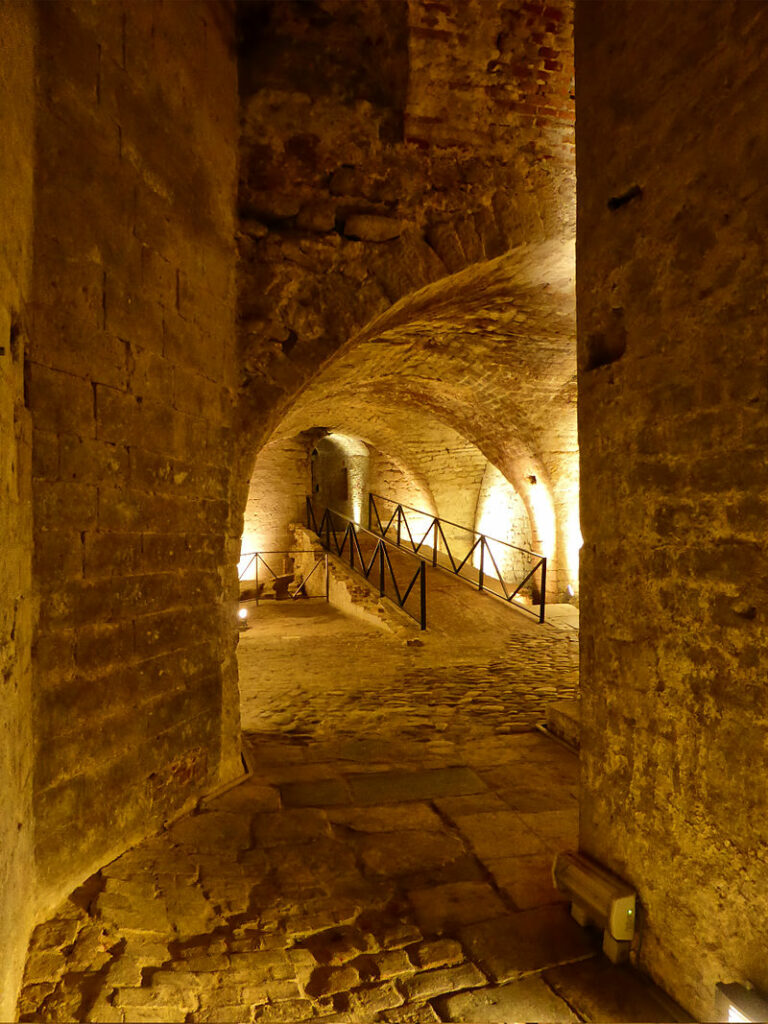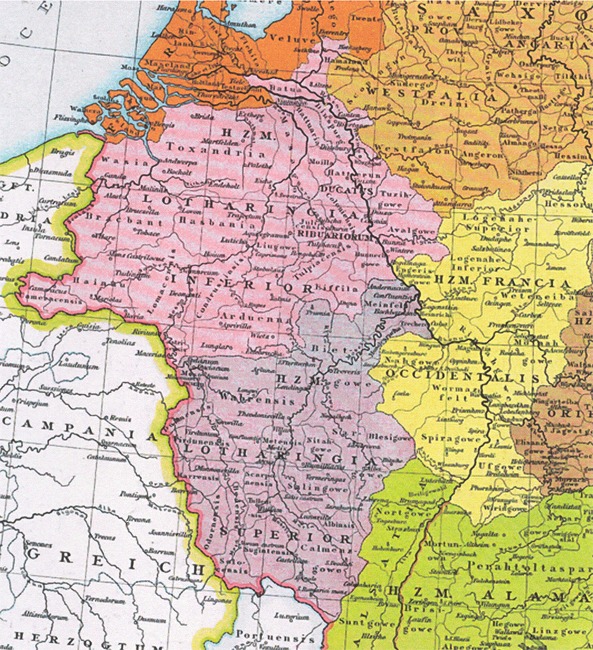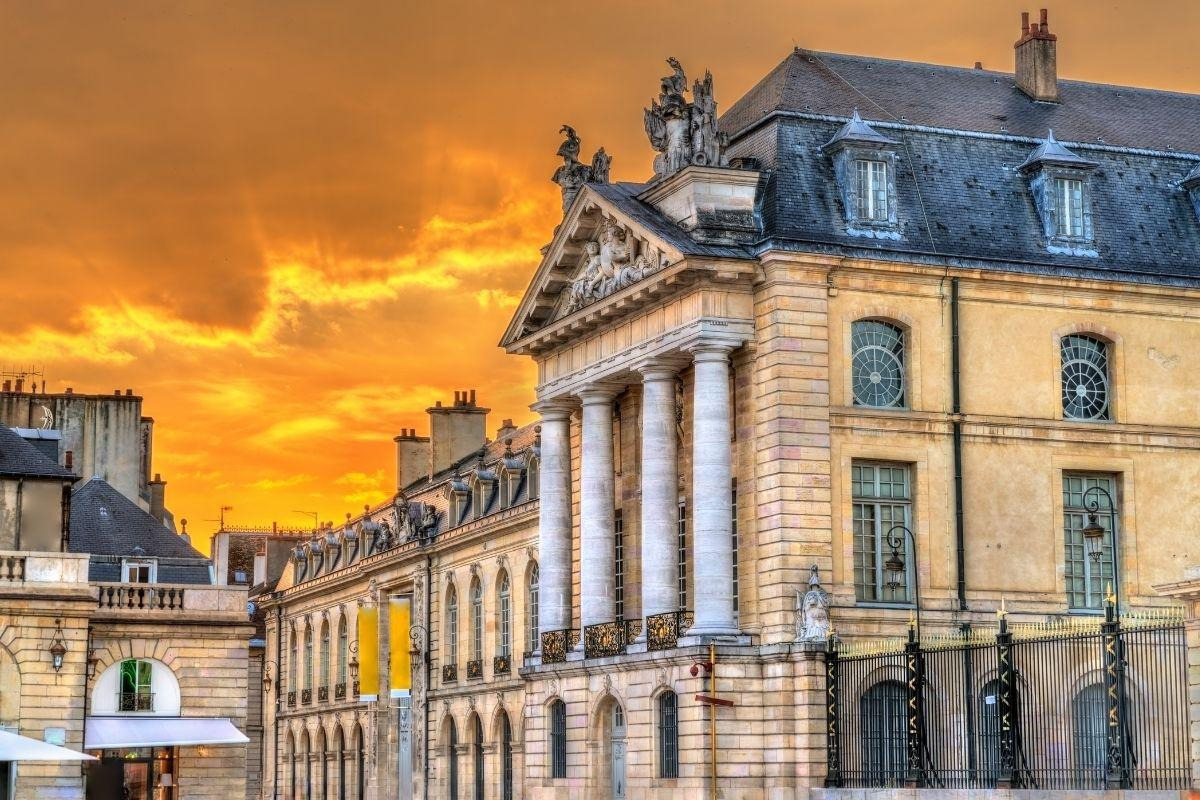There is a persistent myth that Belgium rose from the seabed in 1830 when the modern kingdom we live in today was established.
One would wonder where all those heritage buildings came from. A large part of them are thanks to one of the most exciting dynasties of the Middle Age, full of wealth, cunning, bravery, and a taste for the good things in life. Forget about the Tudors and the Lannisters, here come the Dukes of Burgundy.
It all started in 1356 when a young man called Philip saved his father. As the fourth son of the French king, Philip had little hope to ever do something significant. However, at the battle of Poitiers against the English, his bravery spared the King a grim death. As a reward, he was granted a prosperous fiefdom whose ducal line had just gone extinct: Burgundy.
If you know your geography, or at least your wines, you are aware that Burgundy lies in France. So what does it have to do with Belgium? Well, Philippe got a bit greedy with his duchy and initiated a generations-long process of enlarging it northwards towards the Low Countries.
At the time, what we know as Belgium was a scattered collection of fiefdoms whose theoretical fealty to the German Emperor or the French King was barely worth more than a piece of parchment. Remarkably wealthy, well positioned in international trade, full of craftsmen and skilled workers, they sustained themselves as little autonomous entities.
They had not been truly united and officially sovereign since the time of Lotharingia, a kingdom born of the collapse of Charlemagne's empire, which extended around present-day Belgium into the Netherlands and Eastern France. Lotharingia's fragmentation and theoretical submission to its neighbours gave Duke Philip something to look out for.
Philip married the youngest daughter of the Count of Flanders, which at the time was an area spanning from Northern France to Ghent. These were the first stones: his successors patiently assembled more fiefdoms around them until they could connect those two blocks into one wide and continuous realm that resembled Lotharingia.
Philip’s son inherited some of his father’s pluck and was bestowed with the name ‘John the Fearless’. He owed this moniker to a youthful venture when he was sent to Hungary. It was not exactly an internship carrying coffee mugs for the Hungarian king: he fought at the frontline to defend them from invading Saracens. He did so with such verve that he was granted a nickname that would make any tough guy of our times whimper.
Duke John managed to gather practically all of the fiefdoms of current-day Belgium: Brabant, Limburg, Hainaut and to enhance Burgundy as well. France being embroiled in the Hundred Year's War, he required leadership in the Kingdom behind the scenes, as a condition to his powerful realm's contribution to the struggle.
When the French refused, he kicked them so bad that the Burgundian banner flew over Paris for decades. Nothing seemed to be able to stop John the Fearless. To get rid of him, the French had to murder him at night as he walked to what was supposed to be a reconciliation meeting.

Burgundian realm at its maximum extent in 1477
After that, the stage was set for the real boss: his son Philip the Good. Appalled by his father's assassination, he switched allegiance to England, who was more than eager to grant him more of what he wanted.
Under his long rule, the second Philip would make the dream come true: the Burgundian realm was now extended continuously, albeit narrowly connected, from the Netherlands to the Rhône river, including the entire current-day Belgium. He had Joan of Arc arrested and traded her to the British, and when France finally promised to give in to his demands, he switched allegiance again and let the British be wiped out by the French army.

Philip The Good sporting the necklace of the Golden Fleece, whose chain links have the shape of the Burgundian flint symbol.
But Philip the Good was not all about war, as his nickname might suggest. In his time he was the embodiment of the pygmalion effect. And he used Brussels as a capital. Under Philip's reign, Belgium was Burgundy, and at its core, Brussels was its City of Lights.
Near Brussels’ present-day Place Royale, he erected the Castle of Coundenberg, the ducal palace. In this place, Philip gathered the most brilliant artists of his time. You think the Middle Age was dark and unrefined? Think again and look for Philip's collection. Manuscripts, illuminations, paintings which prefigure the Renaissance; Philip's court would put any Italian artist of his era to shame.
Belgium is full of traces of the Burgundian glory: our museums, the Brussels City Hall, and the entire cities of Bruges and Ghent are Burgundian art. The whole of Medieval Europe pined for Burgundian artists to come work for them–and by ‘Burgundian’, they meant from that centre of gravity of the Ducal realm: what we know today as Belgium.
Testimonies from Philip's reign show an age of opulence. You love Belgian gastronomy? You probably owe it to the Burgundian Dukes. In Belgium today, “to be Burgundian” means to enjoy the pleasures of life, and it is such a pervasive expression that it is used in both languages.
Philip also created the Order of the Golden Fleece, a chivalric order that dwarfed the Round Table and gathered the most powerful and brave knights of the realm in the Coudenberg Castle, wearing golden necklaces gorgeous enough to make Mr T drool. The dukes used the flint as a symbol: a B-shaped metallic item that was used in the Middle Ages to spark a fire. It was a symbol of power, as well as an initial.
Look around Belgium: you will see these ‘B’ shapes engraved on many buildings. If you want to visit Coundenberg castle, you can. It was destroyed by fire in the 17th century, but its foundations are still accessible underground, and you can walk into the room where the Knights of the Golden Fleece gathered under flint-marked stones.

The labyrinth ruins of Coudenberg: The castle of the Dukes can still be visited in Brussels under Place Royale.
The Burgundian dream collapsed with Philip's son Charles. He initially met with success, uniting his bloodline with the rising family of the time–the Habsburgs–and taming every possible rival. He was about to get the Emperor to recognise him as an independent King (it is unclear whether he would have been King of Burgundy or King of Lotharingia) but the two men fell out at the last minute in circumstances that remain mysterious.

Map of Lotharingia (pink and purple), the ephemerous kingom also built around Belgium in the tenth century. Although short-lived, it was the absolute model for the Burgundian Dukes.
Panicking, Charles got embroiled in a series of petty wars that cost him his life–he died in battle at Nancy, leaving his daughter Marguerite in charge. It wasn't long before the French king invaded and annexed what we know today as Burgundy in France. And the Habsburgs inherited the Low Countries through their marriage to Marguerite.
It was a good bargain for them: the Dukes had done an awesome job developing and enhancing the value of the place. No surprises Marguerite's grandson, Ghent-born Charles V, would always consider Belgium the centre of his permanently sunlit Empire–although he did not call it Belgium but the “Burgundian Netherlands”, a name that would stick for a long time and was still sometimes used until the Revolutionary era.
And this is how the guys who created the modern ‘Kingdom of Belgium’ in 1830 made a huge marketing blunder. They gave the country a new name that gave everyone the possibility to forget its roots. Of course, the Dukes were used for patriotic history, but they are now derided, which is a shame, because these four men gave us so many of our modern-day treasures.
Why put them down but cling to other legends such as Richard the Lionheart (who was not really British) or Charlemagne (who was not really French)? As a French author recently wrote: “Belgium is not special for being artificial. It is special for being aware of it”.
But let us forget about those political readings. The Burgundian era left behind most of what we love about Belgium. Next time you enjoy a good dinner and drink in a medieval building looking at gorgeous stained glass or paintings and colourful heraldry displayed in finely chiselled gothic facades, raise a toast to Philip the Good and John the Fearless.

